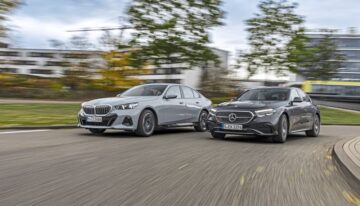In an interview with German Auto Motor und Sport magazine, Ola Kallenius talked about the new MMA platform, the design of the CLA, the Mercedes G-Class mini, the current range of models with conventional engines, and the upcoming electric models.
In the interview with German Auto Motor und Sport magazine, Ola Kallenius mentioned again that Mercedes wants to have a fully electric range by 2030, from the GLA to the S-Class, but he is aware that this is only possible where market conditions allow. The Mercedes boss says he cannot estimate how much the charging infrastructure will expand and the development of the charging network cannot be fully managed by Mercedes.
Asked if the new CLA Concept’s optics have been better received by the public than the EQE/EQS, Kallenius said feedback has been overwhelmingly positive but with the mention that in customer surveys, they get the highest satisfaction ratings from early adopters, in this case from those switching to an electric car.
Kallenius confirmed that the four-cylinder engines for the new CLA will be built in China in a plant in partnership with Geely.
The Mercedes boss also confirmed that the electric models will no longer have the EQ particle in their name. If an electric C-Class emerges in 2026, the C-Class will continue to exist in versions with conventional engines, and both models will still be called C-Class.
One interesting question was about the upcoming G-Class Mini. Kallenius said that the future Mercedes G-Class Mini will definitely be a G-Class and that it will be different from the GLA/GLB but didn’t explain in what way. Mercedes customers have often mentioned how much they love their G, but they are also looking for a more compact version that looks similar.
While there has been plenty of news about a solid-state battery in the upcoming Mercedes G-Class electric, Kallenius said Mercedes has invested in two companies working on the technology that offers higher energy density but costs significantly more.
Asked how satisfied he is with the EQE/EQS’s sales figures, Kallenius said Mercedes is leading in most relevant markets except China. Here, electromobility is growing, especially in the lower market segments.
Kallenius said he will keep the current MRA II platform for models with conventional engines and rear-wheel/all-wheel drive, which is a high-quality and technologically advanced architecture, but there will be improvements in the field of assistance systems and electronic architecture.
You can read the full interview here.













